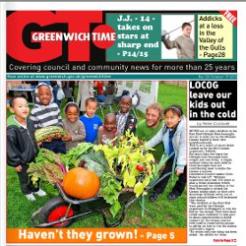New rules preventing excessive publications by councils could have serious knock-on effects for charities. Charity PR specialist Ingrid Marson discusses the implications.
PR Week reported earlier this month that about 100 councils will be forced to cut the frequency of their publications, due to a change in local authority publicity rules. The new rules mean that any council that publishes a title more than four times a year will be forced to cut back on any additional issues.
This cut has been made for sensible reasons - to stop taxpayers' money from being wasted and prevent the local press from being undermined. But it isn't good news for charities and community organisations, who often rely on their local council publication to raise awareness of their organisation and the events they run.
For example, the latest issue of Greenwich Time which is currently published 48 times a year, features numerous stories on charities including a double-page spread on a sporting charity, and stories on events run by Oxfam, Age Concern and a local museum.
The cuts are likely to be felt hardest by small community organisations who often struggle to get publicity in local newspapers. For example, the latest issue of North Somerset Life, which is currently published monthly, publicises various community activities on its events page, including information on local choirs and bands, and details on a course being run by the local bridge club.
It would be difficult for these types of groups to get such good publicity in their local newspaper. Ongoing events are notoriously hard to get publicity for as there isn't the "news hook" that journalists are looking for. Similarly, a niche interest course, such as the bridge course, doesn't have a strong enough news angle to interest a journalist.
The knock-on impact of the reduced coverage is uncertain. A vibrant club or organisation with many members that has good word-of-mouth isn't likely to notice the difference, but for a group that is already struggling to attract new members, the reduction in coverage could have a bigger impact.
The best way for these groups to compensate for the reduction in coverage is to think about creative ways of getting publicity in their local paper - a fundraising event, a club anniversary, a member with an interesting story. For example, Acorn PR used the anniversary angle to help a local blind club get publicity.
For some tips on how to find the best news stories in your charity and present them to the media effectively, click here.








